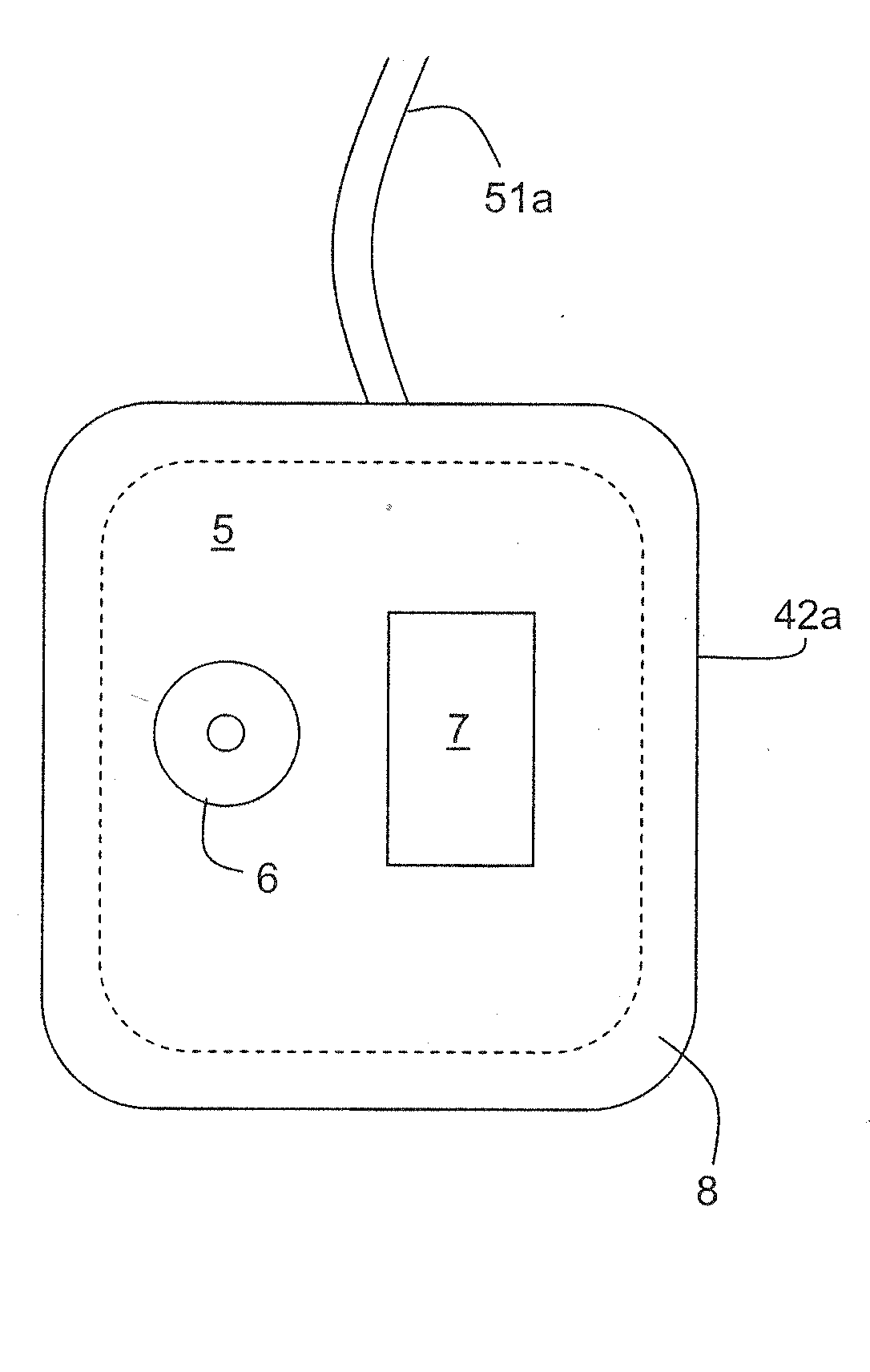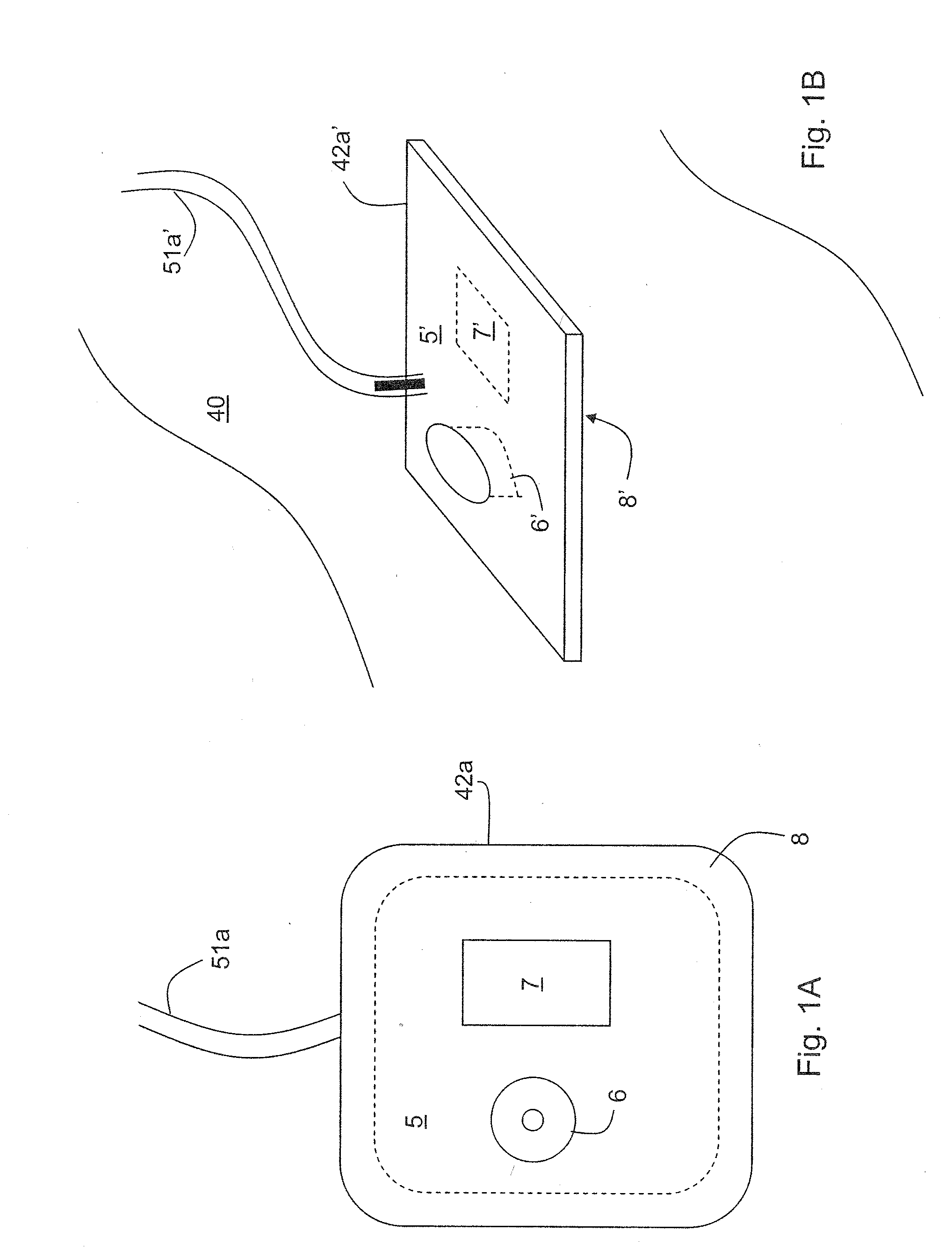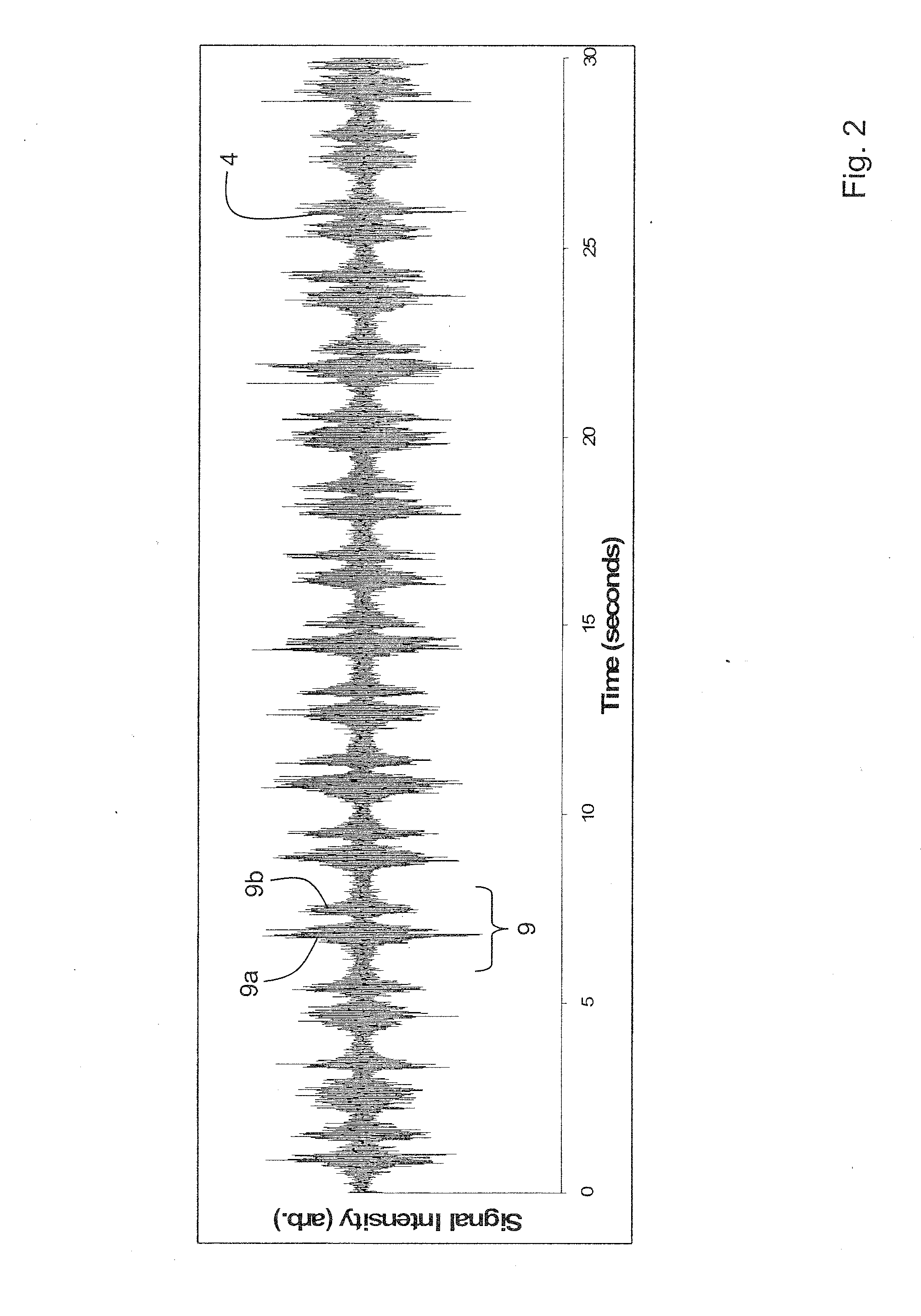Device for determining respiratory rate and other vital signs
a technology of respiratory rate and vital signs, applied in the field of medical devices for monitoring respiratory rate and other vital signs, can solve the problems of inaccurate use of stethoscopes over a long period of time, impracticality and accuracy
- Summary
- Abstract
- Description
- Claims
- Application Information
AI Technical Summary
Benefits of technology
Problems solved by technology
Method used
Image
Examples
Embodiment Construction
[0033]FIGS. 1A, 1B, and 2 show a patch sensor 42a that includes both an acoustic sensor 6 and electrode 7 for measuring respiration rate and electrical signals which can be used to determine other vital signs (e.g. heart rate). A foam backing 5 supports both components within the patch sensor 42a, which additionally includes an adhesive layer 8 on its opposing side. During operation, the adhesive layer secures the patch sensor 42a to the chest of a patient 40, preferably directly below their sternal notch. Both the sensor 6 and electrode 7 directly contact the patient's skin. The sensor 6 is preferably a small-scale microphone that senses ‘sounds’ associated with the patient's breathing, resulting in a time-dependent acoustic waveform 4, shown graphically in FIG. 2. The acoustic waveform 4 features a ‘packet’9 associated with each breath that includes first 9a and second 9b signals corresponding, respectively, to inspiration and expiration. Both the first 9a and second 9b signals ar...
PUM
 Login to View More
Login to View More Abstract
Description
Claims
Application Information
 Login to View More
Login to View More - R&D
- Intellectual Property
- Life Sciences
- Materials
- Tech Scout
- Unparalleled Data Quality
- Higher Quality Content
- 60% Fewer Hallucinations
Browse by: Latest US Patents, China's latest patents, Technical Efficacy Thesaurus, Application Domain, Technology Topic, Popular Technical Reports.
© 2025 PatSnap. All rights reserved.Legal|Privacy policy|Modern Slavery Act Transparency Statement|Sitemap|About US| Contact US: help@patsnap.com



